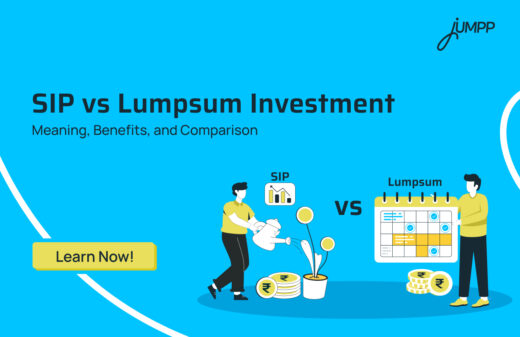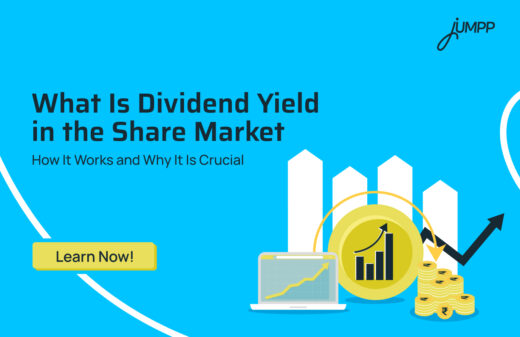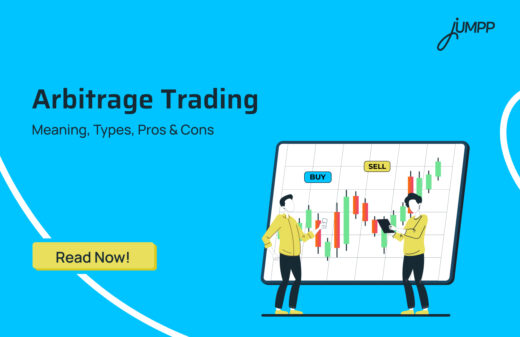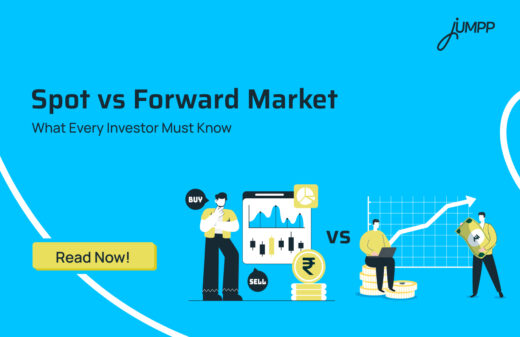Types of Inflation – Meaning, Causes, and Impact
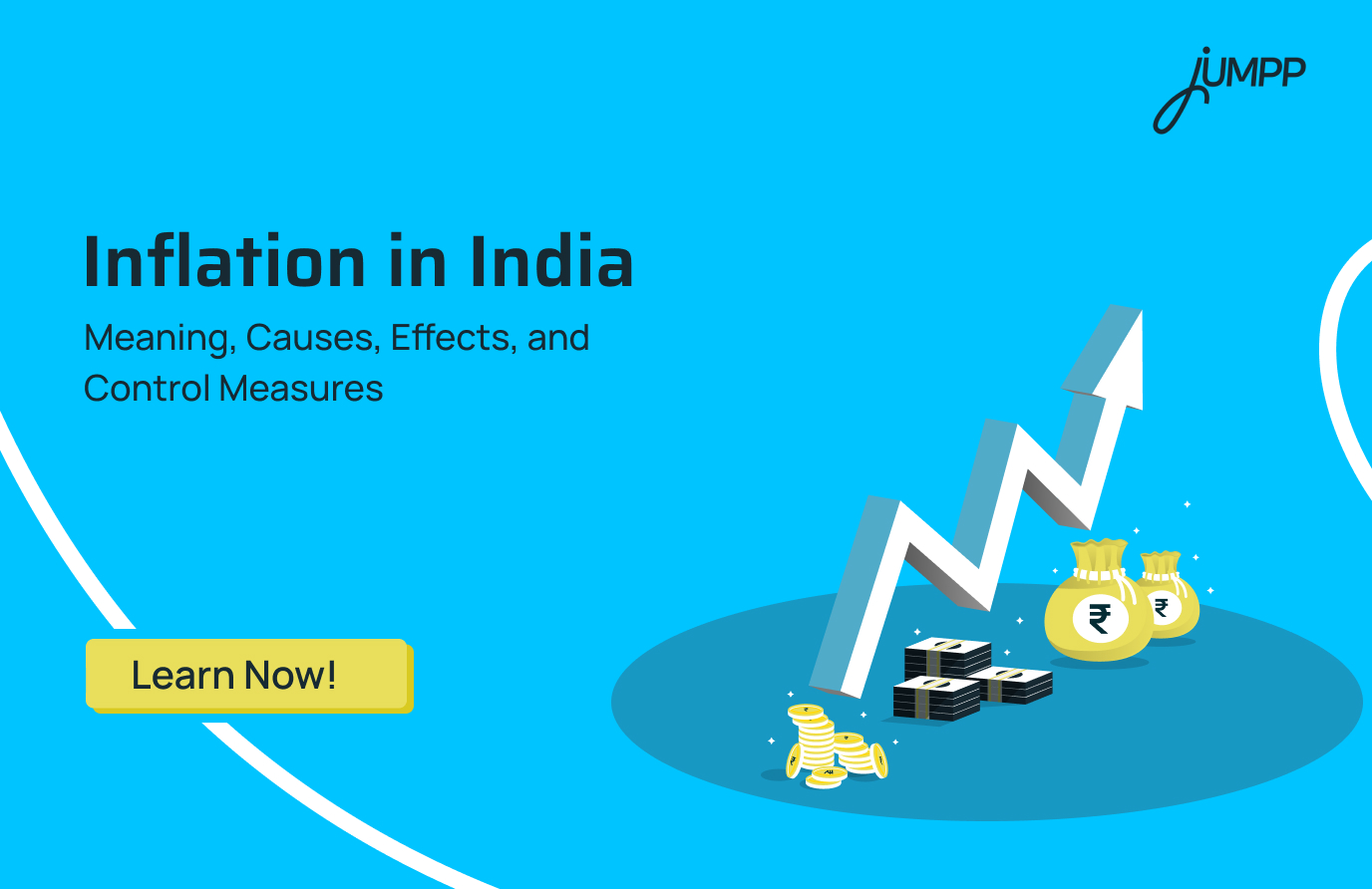
When your mother worries about expensive groceries or your father talks about increasing land prices, they are not just random complaints. What they are describing is inflation. Economists explain this through different types of inflation, such as demand-pull inflation, cost-push inflation, and built-in inflation. Each one works differently, but together they shape the rising cost of living we all face.
Let us look at the various types of Inflation in India!
What is Inflation
Inflation is the rate at which the general price level of goods and services rises over time. It ultimately reduces our purchasing power. This basically means that if milk cost ₹40 a litre last year and now costs ₹50, the same money buys less than before.
Stages of Inflation
Inflation moves in multiple stages.
Let us learn about the stages of inflation and their risk level!
Stage 1- Creeping Inflation (1–4%) is the quietest stage. Here, the prices rise gradually.
Groceries cost slightly more than usual, and the transport fares may inch upward. But the changes are slight enough that it is easy for people to adapt without much thought. This type of inflation is basically manageable.
Stage 2- Walking Inflation (4–10%) is a little faster than creeping inflation.
In this stage, the prices rise at a moderate pace. Due to the speed, households start noticing the difference. The cost of everyday essentials climbs enough to affect your spending habits.
Stage 3- Running Inflation (10–20%) is a more serious stage. Price increases are sharp and continuous. As a result, it starts creating visible strain on budgets.
Stage 4- Galloping Inflation (20–100%) moves at a rapid rate. This is an almost uncontrollable pace.
The cost of living rises sharply, and economic stability comes under threat. People begin to adjust their spending drastically.
Stage 5- Hyperinflation (100%+) is extreme and catastrophic. The value of currency erodes almost daily.
Types of Inflation in India
| Type | Meaning and Impact |
| Creeping Inflation | A very slow and mild increase in prices. |
| Walking Inflation | This means a moderate but noticeable increase in prices. |
| Galloping Inflation | There is a rapid and severe price rise that erodes purchasing power and destabilises the economy. |
| Hyperinflation | Extreme and out-of-control price rise. This often collapses the value of currency. |
| Demand-Pull Inflation | It occurs when demand outpaces supply, pushing prices up. |
| Cost-Push Inflation | This is triggered by rising production costs like raw materials or wages, passed on to consumers. |
| Built-in Inflation | Self-perpetuating wage-price spiral |
| Stagflation | There is high inflation, stagnant growth and high unemployment. |
| Structural Inflation | This results from economic inefficiencies, like poor infrastructure, supply chain bottlenecks, or monopolistic practices. |
Inflation can be understood in two ways: by what causes it and by how fast it moves.
- When you look at the cause, there is demand-pull, cost-push, and built-in inflation.
- When you look at the speed, there is creeping, walking, galloping, and hyperinflation.
Types of Inflation by Cause
Demand-pull inflation
It happens when the economy simply cannot keep up with how much people want. People are willing to pay more, and prices go up.
On a larger scale, when total demand for goods and services exceeds what the economy can supply, prices climb.
This is often summed up as “too much money chasing too few goods.” It is a sign that people have money to spend, but the supply cannot meet the excitement or need.
Cost-Push Inflation
This comes from the other side of the ledger, i.e., businesses.
When wages go up, energy gets more expensive, or raw materials suddenly cost more, businesses have no choice but to raise their prices.
When producing the same product costs more than yesterday, the customer inevitably pays the difference.
Built-in Inflation
This type of inflation is more like a habit that grows in the system itself.
Workers expect prices to rise, so they demand higher wages. Businesses, facing these higher wages, raise the prices of goods to maintain their profits. This creates a feedback loop, and that is a wage-price spiral.
Types of Inflation by Rate
Creeping Inflation is the gentle, almost invisible rise in prices. It is usually less than 3% per year. It is manageable, predictable, and does not usually disrupt life in obvious ways.
Walking Inflation or Trotting Inflation is a little faster.
Prices rise at a moderate pace. This is often between 3% and 10% annually.
Galloping Inflation moves quickly, often hitting double or triple digits annually.
Herein, prices jump sharply.
Hyperinflation is the extreme end of the spectrum.
Prices rise at terrifying speeds, sometimes over 50% in a single month.
Money loses its value almost as soon as it is earned, and the economy becomes unstable.
All these types of inflation show us one simple truth: the money in your hand today will not stretch as far tomorrow. The first step in protecting yourself is to start saving regularly, no matter how small the amount. A zero-balance savings account is a smarter way to do this!
What are the Causes and Factors of Inflation?
Inflation affects everyone from street vendors to salaried workers, from small businesses to large corporations. At its core, inflation is driven by how money, goods, and expectations interact, and a single factor rarely causes it.
1. Demand-pull inflation occurs when the desire for goods and services outstrips the ability of the economy to supply them.
When too many people want too few products, prices rise because everyone is effectively bidding against each other.
2. While demand-pull inflation comes from the buyers’ side, cost-push inflation originates from the supply side.
When the cost of production increases, businesses pass those costs onto consumers to maintain profit margins. This type of inflation can hit hard because it often comes unexpectedly and is harder to control with policy alone.
3. Built-in inflation is a self-perpetuating cycle where wages and prices chase each other.
When workers see prices rising, they demand higher wages to maintain their standard of living. Businesses, facing higher labour costs, raise prices to protect their margins.
4. Other Factors of Inflation
When the money supply grows faster than the economy’s capacity to produce goods, prices rise. Expectations themselves are powerful.
- Excess Money Supply: More money in circulation increases spending. This drives prices higher.
- Expansionary Fiscal Policy: Government spending or tax reductions boost demand, which can trigger inflation if supply does not keep up.
- Supply Shocks: Events like natural disasters, pandemics, or geopolitical conflicts disrupt supply chains and elevate prices.
- Speculation and Hoarding: Artificial scarcity created by traders or corporations can inflate prices.
- Currency Depreciation: A weaker rupee makes imports more expensive, contributing to domestic inflation.
- High Indirect Taxes: Increased GST or other taxes raise the cost of goods and services.
- Wage-Price Spiral: Rising wages prompt businesses to raise prices, feeding further wage demands.
What are the Common Measures of Inflation?
Inflation can be measured, tracked, and analysed.
Here are some common ways of doing it!
1. Consumer Price Index (CPI)
The Consumer Price Index tracks changes in the average prices of a fixed set of goods and services consumed by households.
It reflects what people actually pay in markets for essentials like food, housing, transport, and education.
- The CPI is a key indicator of retail inflation and is released regularly by the National Statistical Office.
- Its current base year is 2012.
- It is set to 100 for reference, and the Reserve Bank of India uses it as the main tool for inflation targeting.
- RVI aims to keep it between 2% and 6%.
2. Wholesale Price Index (WPI)
The Wholesale Price Index measures price changes at the wholesale level.
It focuses on goods traded in bulk, such as raw materials, industrial inputs, fuel, and manufactured products.
- This is published by the Office of the Economic Adviser under the Ministry of Commerce and Industry.
- The WPI uses a base year of 2011-12.
- While it provides insight into producer-level inflation, it is less directly relevant for household consumption than the CPI.
3. Producer Price Index (PPI)
The Producer Price Index measures the prices received by domestic producers for their output.
This indicator can reveal cost pressures before they reach retailers or consumers.
In India, the PPI is still under development and is not yet widely used compared to the CPI and WPI. However, it holds potential for providing an early signal of inflation trends in the economy.
4. GDP Deflator
The GDP deflator offers the broadest measure of inflation.
- It captures price changes across all goods and services produced in the economy.
- It is updated quarterly and provides a comprehensive picture of overall price movements.
- However, due to reporting delays, it is less useful for making immediate policy decisions than the CPI or WPI.
What are the Measures to Control Inflation
Governments and central banks around the world, including India, have a set of tools to control rising prices.
Here are some of the common measures to control inflation-
1. Monetary Policy (Reserve Bank of India)
The central bank plays a key role in keeping inflation in check.
- One of its main tools is interest rates. By raising rates, borrowing becomes more expensive for consumers and businesses.
- The RBI also uses reserve ratios.
These include the Cash Reserve Ratio (CRR) and Statutory Liquidity Ratio (SLR).
By increasing these ratios, banks are required to keep a larger portion of their deposits with the central bank, reducing the funds available for lending.
- Open Market Operations (OMOs) are another tool.
By selling government securities, the RBI absorbs excess liquidity from the financial system.
2. Fiscal Policy (Government)
Fiscal measures complement monetary policy.
- As per this set-up, reducing government spending lowers total demand. This happens because fewer resources are injected into the economy.
- On the flip side, raising taxes reduces disposable income, controls consumption and slows the pace of price increases.
3. Supply-Side and Administrative Measures
Sometimes inflation is not driven by demand but by shortages.
In such cases, supply-side strategies become crucial.
- Improving supply chains through infrastructure investments and better logistics ensures goods move efficiently from producers to consumers.
- Governments also target artificial scarcity.
Controlling hoarding and importing essential goods are some of the common tools adopted.
Recent Inflation Trends in India
As of August 2025, CPI inflation rose to 2.07% year-on-year.
This puts it close to the Reserve Bank of India’s lower tolerance band of 2%.
Food inflation, tracked through the Consumer Food Price Index, moved from -1.76% in July to -0.69% in August. This shift reflects rising prices for everyday essentials.
The rural CPI inflation was 1.69% in August 2025, up from 1.18% in July. On the other hand, the urban CPI inflation rose to 2.47% from 2.10% in July.
Impact of Inflation on India
Inflation in India is felt in markets, homes, and daily lives across cities and villages.
1. Reduction in your purchasing power
When prices rise, the money in people’s hands buys less. Lower-income groups feel this most, as a larger share of their earnings goes toward essentials like food, fuel, and utilities.
2. Interest Rates and Borrowing Costs
To keep inflation under control, the Reserve Bank of India may raise interest rates. While this helps in controlling demand, it also makes borrowing more expensive.
3. Investment Uncertainty
High or unpredictable inflation makes planning difficult. Companies cannot accurately forecast costs or returns, which can deter long-term investment.
4. Income Redistribution
Inflation does not affect everyone equally. People on fixed incomes, such as pensioners, find that their earnings lose value. However, people with assets like stocks, real estate, mutual funds, etc, may benefit.
5. Government Policy Challenges
Managing inflation requires balance. Overly aggressive measures, like sudden hikes in interest rates or taxes, can slow growth and investment. On the other hand, ignoring rising prices risks runaway inflation.
Saving is the beginning, but it is not the end. To actually beat inflation, you need to grow your money with purpose. This is where setting the right financial goals becomes essential. Understanding why goals matter and how to define them is the first step to investing wisely!
Conclusion
Inflation is a story about the value of money, how it changes over time, and how households like us, businesses, and governments adjust in response. In India, where millions of people depend on modest incomes and daily wages, even moderate inflation touches lives directly. It influences choices, opportunities, and financial security.
Types of Inflation in India- FAQs
The 4 types of inflation are creeping, walking, galloping, and hyperinflation, describing the speed of price increases. They range from slow and manageable to extreme and disruptive for the economy.
The 7 types of inflation include the four speed-based types plus Demand-pull, Cost-push, and Structural inflation. These explain both how fast prices rise and why they rise.
The 8 types of inflation include the speed-based, cause-based, Built-in (wage-price spiral), and Core inflation (excluding volatile items). This provides a more complete picture of price changes in the economy.
The 8 causes of inflation are Demand-pull, Cost-push, Supply shocks, Money supply, Inflation expectations, Fiscal policies, Currency devaluation, and rising global commodity prices. These factors together drive price increases in the economy.
CPIH is not consistently higher than CPI. it depends on how housing costs and owner-occupiers’ costs are accounted for. The difference changes over time and is not uniform.
CPI is not better than GDP. They serve different purposes. CPI tracks household living costs, while the GDP deflator measures overall price changes in the economy.
The difference between CPI and PPI is that CPI measures consumer-level prices, while PPI measures wholesale prices received by producers. PPI often indicates future consumer price movements.


